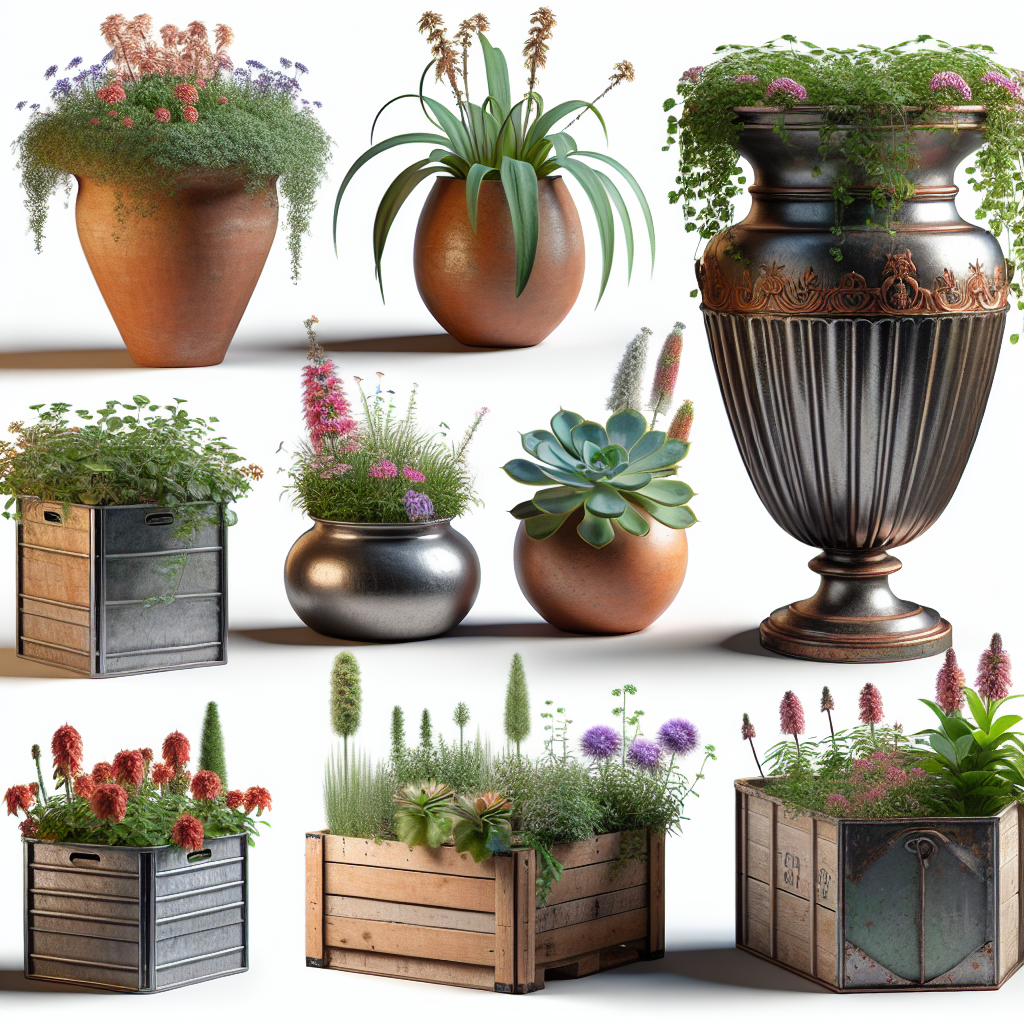Exploring Different Containers for Your Garden Plants
Introduction:
Gardening is a popular and rewarding hobby that allows individuals to beautify their outdoor spaces while enjoying the benefits of nature. One important aspect of successful gardening is choosing the right containers for your plants. While traditional clay pots have long been the norm, there are now a wide variety of containers available that can add style and uniqueness to your garden. In this article, we will explore different types of containers for your garden plants, highlighting their pros and cons.
1. Clay Pots:
Clay pots are classic and widely used in gardening. They have natural insulation properties, providing a stable environment for plant roots. Clay allows air movement through the pot’s walls, promoting healthy root growth. However, they can be heavy, prone to breakage, and may dry out quickly due to porous material.
2. Plastic Containers:
Plastic containers are lightweight, affordable, and come in various sizes and colors. They retain moisture well since they are non-porous but may lack proper drainage holes if not pre-drilled before use. Plastic containers are less prone to breakage but can deteriorate under prolonged exposure to sunlight.
3. Terracotta Pots:
Terracotta pots offer a similar aesthetic to traditional clay pots but with added durability due to the firing process they undergo during manufacture. They retain moisture better than standard clay pots and provide excellent breathability for plant roots. However, terracotta can be slightly more expensive than other options.
4. Wooden Planters:
Wooden planters provide a rustic and natural look to any garden setting. They are available in various types of wood like cedar or redwood, which naturally resist rotting caused by damp soil conditions. Wooden planters can be heavy and require regular treatment with waterproofing agents to prolong their lifespan.

5. Metal Containers:
Metal containers such as troughs or buckets offer a modern touch to gardens with their sleek and industrial designs. They are durable and excellent at retaining moisture. However, metal can heat up quickly under direct sunlight, potentially damaging plant roots. To prevent this, using a liner or painting the container a lighter color can help reflect sunlight.
6. Hanging Baskets:
Hanging baskets are an ideal choice for those with limited garden space or for adding vertical interest to your outdoor design. Made of various materials like wire, plastic, or natural fibers, hanging baskets allow trailing and cascading plants to drape beautifully. Be cautious of watering frequency as they may dry out rapidly due to their exposed position.
7. Recycled Containers:
Upcycling old items into plant containers adds a unique and eco-friendly touch to your garden. You can repurpose items such as old tires, buckets, or even shoes to hold your plants. However, ensure proper drainage is in place by drilling holes at the bottom or using layers of gravel or broken pots.
Conclusion:
Choosing the right containers for your garden plants is crucial for their health and overall aesthetics of your outdoor space. Clay pots offer traditional charm but may require additional care. Plastic containers are versatile and affordable but can deteriorate over time. Terracotta pots provide a balance between aesthetics and functionality at a slightly higher price point. Wooden planters bring a rustic appeal but require maintenance to prevent rotting. Metal containers offer a modern touch but can become hot under sunlight. Hanging baskets provide a space-saving option while allowing trailing plants to shine. Lastly, recycling old items into plant containers adds creativity to your garden while reducing waste.
Ultimately, consider the specific needs of your plants and the style you wish to achieve when selecting the perfect container for your garden plants. With various options available, there is something for every gardener’s taste and requirements!













